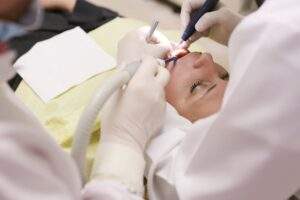Everything You Need To Know About Breast Augmentation
Breast augmentation, also known as augmentation mammoplasty can be explained as a surgical procedure that would aim at an increase in the size, fullness, shape of the breast. During the procedure, the surgeon places saline, silicone, or alternative composite breast implants within the muscles of the chest or the breast tissue. These generally last up to 8 years on average.
Purpose of breast augmentation surgery
This procedure is performed in order to:
- Reinstate the size and shape of breasts after pregnancy, breastfeeding or extreme weight loss
- To increase the size of breasts that are naturally small
- Reinstate symmetry in naturally asymmetrical breasts
- Restoration of breasts after a surgery
Breast augmentation would typically fall under the category of cosmetic surgery which is done for esthetic purposes.
Breast augmentation lifting procedure
This procedure can be called mastopexy, and it can help women get breasts that appear perkier, fuller, rounder and more youthful. This procedure will help keep the breasts firm and perky for many years together. Implants are likely to retain their shape and heights easily because gravity does not affect implants the way it does natural breast tissue. A person with sagging breasts and increased fullness over the upper portion of the breasts is appropriate for breast augmentation lifting. Women who have anatomy inconsistency with tuberous breast deformity are also a good fit here.
What breast augmentation shapes can you go for?
The two most basic breast augmentation shapes available for implants are teardrop and round, commonly known as anatomical or contoured. Both shapes come in varied sizes and profiles. Choice of the shape might depend on one’s aesthetic goals, preferred incision location, and placement of the implant. Round implants are similar to a compressed ball. The filing can be done with saline or silicone gel, and round, soft, proportionate appearance can be created. Patients have a choice between a textured and a smooth surface. Patients are likely to experience minimal variation in projection or fullness between the ends of the implant because they are flat, circular and uniform in appearance. The teardrop implant is suitable for women who desire correction of mild sagging because the shape and material of breast implant alone can sufficiently elevate the breasts, eliminating the need for breast lift surgery. This is for a more natural look and feels since round implants often look artificial. These implants generally have a textured surface in order to prevent rotation or to shift within the breasts.
Possible breast augmentation locations?
There are three most commonly used breast augmentation locations: within the armpit (trans axillary), inside the breast fold (inframammary crease) or around the nipple (periareolar). The inframammary incision is very well concealed and provides the best visualization of tissues to the surgeon. All three types of implants: silicone gel, saline, and anatomic silicone gel can be conveniently placed through this incision. The risk of breastfeeding is lower as well in this incision. The trans-axillary incision has the benefit of being off the breast, but might show through some types of clothing, bearing a small risk of injury to certain nerves and vessels in the arm. Saline implants can be very well inserted through this method. The periareolar is well concealed as well, but it may get difficult to place larger silicone implants and anatomic silicone implants through this method. The risk is higher in terms of discomfort in breastfeeding as well as loss of sensation in nipples.
How does the breast augmentation healing go about?
After the effect of anesthesia wears off, the patient will have to take pain killers in order to subside the pain. After taking general anesthesia, the patient will not be able to drive and so must have an arrangement for the same. The absorbable or dissolvable stitches generally disappear in 6 weeks. In case the patient’s stitches don’t dissolve, or if drainage tubes are located near the breasts, a follow – up appointment would necessary in order to remove them. The following information should be provided by the medical team during the breast augmentation healing period:
- the way to take care of breasts after the procedure
- the way to use prescribed medications
- the time to attend a follow – up session
- the times when calling a doctor is needed:
- signs of infection, like fever or redness in the breast area
- unusual heartbeats, pain in the chest, or shortness of breath
- the is not recommended to indulge in strenuous physical activities for 6 weeks






